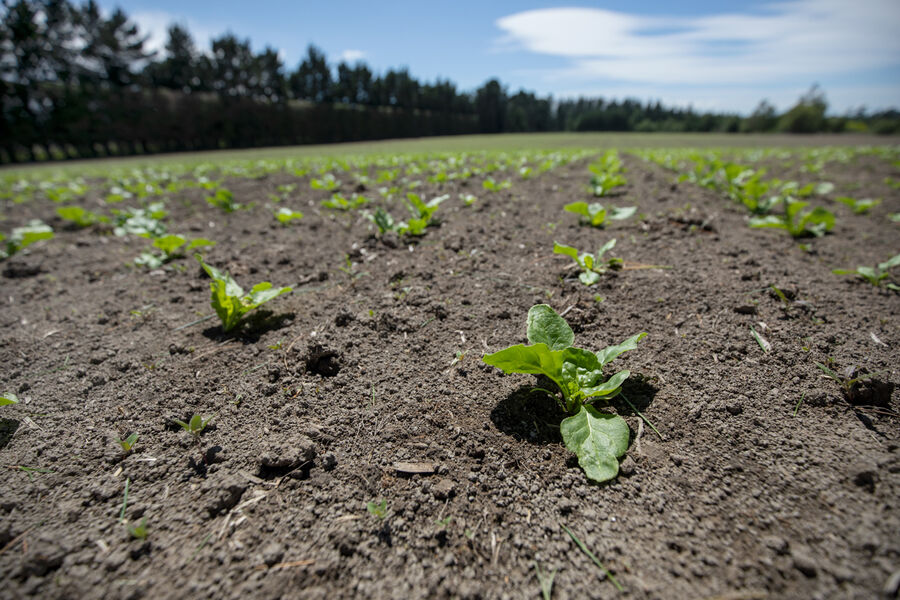
You’ve done the hard yards with paddock prep and sowing. The seeds in the ground. But with fodder beet, the jobs only half done. The next 8–10 weeks will decide whether you’re looking at a full canopy and tonnes of reliable feed - or a patchy paddock that never reaches potential.
Here’s what matters most once beet is in the ground.
1. Weed Control: Stay on the Front Foot
Fodder beet’s slow start leaves weeds plenty of runway. The golden rule? Keep the crop clean until canopy closure.
- Pre-emerge sprays protect seedlings in their most vulnerable window.
- Post-emerge sprays must be well-timed - too late and weeds outcompete; too early and tender beet seedlings take the hit.
- Aim for a clean 8–10 weeks. After that, a closed canopy does the heavy lifting.
Tip: Missed sprays cost yield. Build a programme with your agronomist and stick to the timing windows.
2. Nutrition: Feeding the Engine
Beet is a heavy feeder. You’ll need to keep nutrients flowing if you want maximum yield.
- Nitrogen: Initially, 30 - 50 kg/ha at sowing, followed by another 50 - 75 kg/ha pre-canopy closure. Further nitrogen after canopy closure can help maintain a healthy canopy and increase total protein of the crop.
- Phosphorus & Potassium: critical for root and bulb development - soil tests will guide exact rates.
- Trace elements: sodium and boron often limit yield; correct deficiencies before they rob performance.
3. Pests & Diseases: Don’t Let Them Steal a March
Insects like leaf miners can quickly knock seedlings and aphids transmit diseases like beet western yellow virus early in the crops development stages that can be devastating later in the season. Keep an eye out from emergence onwards. Fungicide programmes may be needed in high-pressure seasons to protect canopy longevity.
- Walk crops weekly.
- If you’re unsure, get an agronomist’s eye over it early - cheaper to prevent than to rescue.
4. Irrigation & Moisture
Moisture at sowing is one thing; moisture through establishment is another.
- Keep soil moisture consistent through the first 6–8 weeks for strong canopy growth.
- Avoid over watering – small seedlings don’t require large amounts of water, beet hates wet feet and constant moisture can increase the risk of disease and fungal infection.
5. Planning Ahead for Grazing
It might feel early, but grazing strategy should already be on the table.
- Think through paddock access, breaks, and transition.
- Build in fibre and water alongside beet.
- Avoid setting up in areas prone to pugging or poor winter access.
Planning now saves a scramble in June.
Where It Pays
Every extra tonne of beet DM lowers your c/kg DM and gives you a buffer heading into winter. The economics only stack up when crops reach their full yield - which means getting these post-sowing steps right.
The Take-Home
- Count seedlings to confirm establishment.
- Stick to your spray programme - weeds don’t wait.
- Feed the crop with well-timed N, P, K, and trace elements.
- Scout for pests weekly.
- Lock in grazing plans early.
Fodder beet doesn’t forgive mistakes, but it rewards attention to detail. Talk to your Catalyst agronomist about crop checks and spray programmes this month - keeping beet on track now is the cheapest insurance you’ll buy.